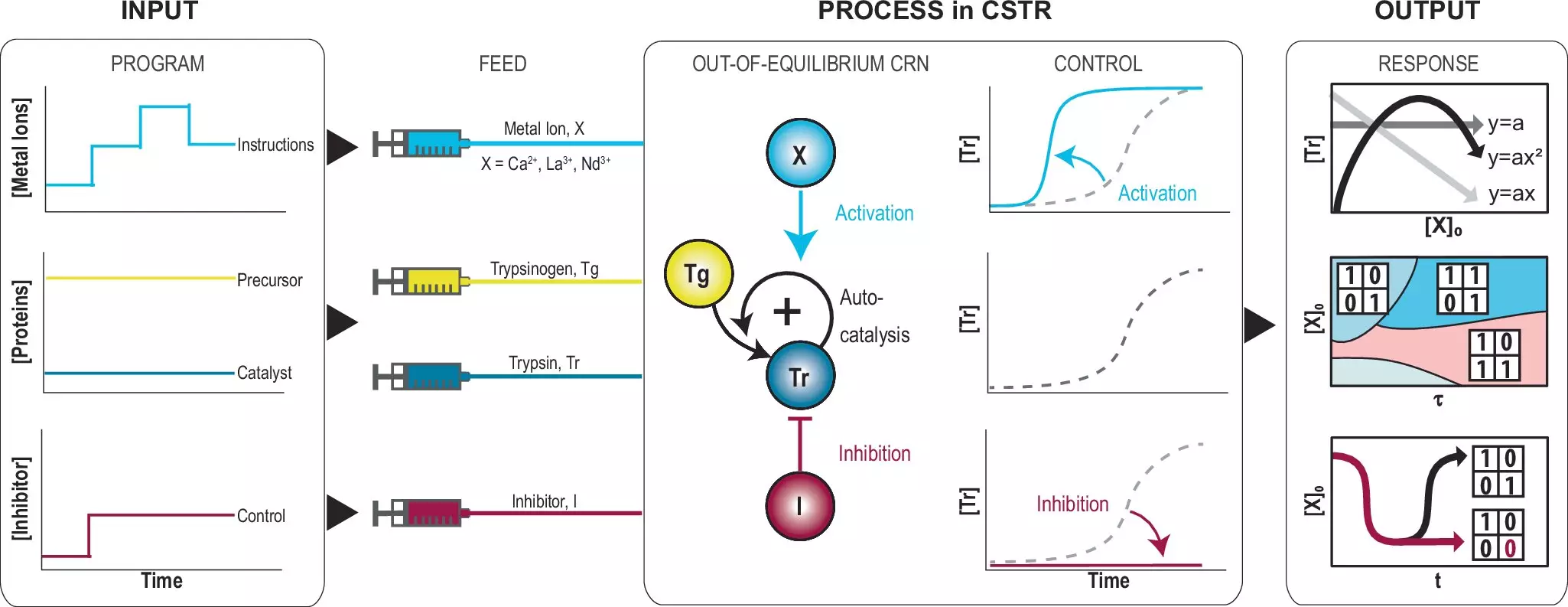In a remarkable advancement, scientists at the University of Twente have developed a pioneering technique to manipulate chemical reactions with precision through metal ions. This innovative method represents a significant stride toward creating computational systems that can mimic the complex processing abilities of the human brain. Their groundbreaking research findings, recently released in the prestigious journal Nature Communications, have potential implications that could transform the future of artificial intelligence and material science.
Biological systems rely on intricate chemical interactions to respond to environmental stimuli, a process that often utilizes less energy compared to traditional digital computation. The core of this research lies in the quest to translate the inherent efficiency of nature’s information processing into artificial systems. Unlike conventional computers that operate on binary logic, living organisms utilize a rich tapestry of chemical reactions to relay information, a quality that researchers have long tried to replicate using molecular structures.
The research team successfully demonstrated the ability to emulate complex mathematical functions using metal ions. They showcased how these ions could replicate key mathematical constructs, including polynomials, along with logical Boolean functions that shift based on varying inputs. This orchestration of reactions signifies a breakthrough in programming capabilities, enabling the manipulation of chemical pathways in a way that was not previously possible.
The Concept of Memory in Chemical Reactions
An intriguing aspect of the findings is the researchers’ ability to create a material that can “remember” past states. With their method, they introduced a mechanism that allows the system to maintain two distinct states through the regulation of autocatalytic reactions—these are reactions that expedite themselves over time. Specifically, they focused on the transformation of trypsinogen into trypsin, a process pivotal in various biological functions. By incorporating an agent that obstructs this reaction, they effectively engineered a chemical system capable of retaining information.
Exploring Future Applications and Implications
The implications of this research extend beyond traditional chemical processing. The potential applications in areas like artificial intelligence are profound, allowing for the creation of chemically-based networks capable of learning and memory. Additionally, this work could significantly influence nanobiotechnology and investigations into the chemical underpinnings of life itself. By steering chemical processes toward adaptive and intelligent systems, researchers are paving the way for future innovations that could alter how we understand and interact with materials at a fundamental level.
The University of Twente’s recent discoveries signify an exciting frontier in computational chemistry and material science. By fusing chemical reactions with principles of memory and adaptability, researchers are not just imitating biological processes; they are forging pathways toward machines that learn and evolve. As this field continues to advance, it opens the door to a myriad of possibilities, fundamentally changing our approach to technology and the inherent complexities of life. This intersection of chemistry and computing heralds a new era where the boundaries of artificial intelligence extend into the realm of natural processes.


Leave a Reply